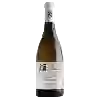
Domaine Jaboulet VercherreCuvée Dames de la Cbarite Hospices de Beaune Pommard
This wine generally goes well with poultry, beef or veal.
Food and wine pairings with Cuvée Dames de la Cbarite Hospices de Beaune Pommard
Pairings that work perfectly with Cuvée Dames de la Cbarite Hospices de Beaune Pommard
Original food and wine pairings with Cuvée Dames de la Cbarite Hospices de Beaune Pommard
The Cuvée Dames de la Cbarite Hospices de Beaune Pommard of Domaine Jaboulet Vercherre matches generally quite well with dishes of beef, veal or game (deer, venison) such as recipes of beef marengo "my mom" style, pork tenderloin with onions or paella valenciana (without seafood).
Details and technical informations about Domaine Jaboulet Vercherre's Cuvée Dames de la Cbarite Hospices de Beaune Pommard.
Discover the grape variety: Sulima
Interspecific cross obtained in 1966 between the verdelet or 9110 Seibel and the sultana, registered in the Official Catalogue of table grape varieties list A1.
Informations about the Domaine Jaboulet Vercherre
The Domaine Jaboulet Vercherre is one of of the world's great estates. It offers 191 wines for sale in the of Pommard to come and discover on site or to buy online.
The wine region of Pommard
The wine region of Pommard is located in the region of Côte de Beaune of Burgundy of France. Wineries and vineyards like the Domaine Leroy or the Château de Pommard produce mainly wines red. The most planted grape varieties in the region of Pommard are Pinot noir, Cabernet-Sauvignon and Gamay noir, they are then used in wines in blends or as a single variety. On the nose of Pommard often reveals types of flavors of cherry, truffle or clove and sometimes also flavors of game, cheese or rose petal.
The wine region of Burgundy
Bourgogne is the catch-all regional appellation title of the Burgundy wine region in eastern France ("Bourgogne" is the French name for Burgundy). Burgundy has a Complex and comprehensive appellation system; counting Premier Cru and Grand Cru titles, the region has over 700 appellation titles for its wines. Thus, Burgundy wines often come from one Vineyard (or several separate vineyards) without an appellation title specific to the region, Village or even vineyard. A standard Burgundy wine may be made from grapes grown in one or more of Burgundy's 300 communes.
The word of the wine: Residual sugars
Sugars not transformed into alcohol and naturally present in the wine. The perception of residual sugars is conditioned by the acidity of the wine. The more acidic the wine is, the less sweet it will seem, given the same amount of sugar.














